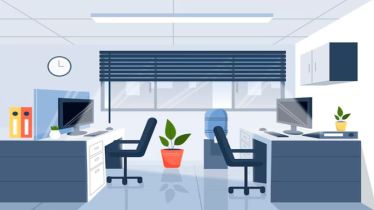The design of an office is more than just aesthetics—it plays a pivotal role in shaping productivity, employee morale, and company culture. Thoughtfully planned interiors can enhance focus, promote collaboration, and reflect a brand’s core values. This article explores how strategic office design fosters a thriving workplace environment. To understand the same, we got in touch with Akshay Lakhanpal, CEO India of Space Matrix. We discussed the changing landscape of office spaces and their impact on India’s economic growth. Excerpts from the interview:
Q: How has the approach to workplace design changed in recent years?
Lakhanpal: The shift has been dramatic. Workplaces are no longer just about square footage and cost per employee. They’ve become strategic assets that can significantly impact a company’s success. CEOs and CHROs are now driving real estate decisions, focusing on creating environments that foster strong company culture, attract top talent, and drive engagement.
Q: What are the key challenges in post-pandemic office design?
Lakhanpal: The biggest challenge is addressing employee disengagement. According to Gallup’s 2024 report, 68% of Indian employees are disengaged, potentially costing companies over a billion dollars. We need a paradigm shift in how we view workspaces. They’re not just functional areas; they’re tools to unleash human potential, build strong employer brands, drive innovation, and embrace sustainability.
Q: Can you give an example of a project that required reimagining traditional office design?
Lakhanpal: Certainly. Take Nestlé’s headquarters transformation, for instance. They recognized the need to adapt to more flexible and collaborative work styles. The redesign focused on creating a community-oriented environment with nature-inspired elements, diverse seating options, and dedicated collaborative spaces. The result was a workplace that not only supported business goals but also enhanced employee satisfaction and engagement.
Q: How do you incorporate human-centric design in your projects?
Lakhanpal: Our approach is rooted in understanding the unique needs and aspirations of each workforce. We employ Design Thinking methodologies to gather real-world insights, creating environments that foster a sense of belonging, inspiration, and productivity. The goal is to empower employees by providing spaces that support diverse work styles, promote collaboration, and prioritize well-being.
Q: How does workplace design contribute to India’s economic growth?
Lakhanpal: Well-designed workspaces can be catalysts for economic growth. They foster productivity and engagement, leading to increased innovation. They also play a crucial role in attracting and retaining top talent, which is essential for economic success. Moreover, by embracing sustainability in design, we’re contributing to India’s environmental goals and enhancing companies’ reputations.
Q: How do you measure the impact of your designs on workers?
Lakhanpal: We establish specific KPIs for each project, such as increased employee satisfaction, productivity, or collaboration. By tracking these metrics, we can quantitatively measure the impact of our designs. A successful project satisfies employees while aligning with the organization’s business objectives.
Q: What’s your vision for the future of workplace design in India?
Lakhanpal: Our vision goes beyond creating functional spaces. We aim to redefine what work environments mean for today’s dynamic, global workforce. As India’s economy grows, there’s an increasing demand for workspaces that enhance employee engagement, boost productivity, and contribute to overall business success. We believe that by focusing on human-centric, flexible, and sustainable design, we can create workplaces where people thrive and businesses flourish.
As the conversation with Akshay Lakhanpal illustrates, the future of work in India is being shaped not just by technology and policy, but by the very spaces we work in. As companies continue to adapt to changing work paradigms, thoughtful workplace design will undoubtedly play a crucial role in driving innovation, employee satisfaction, and economic growth.
